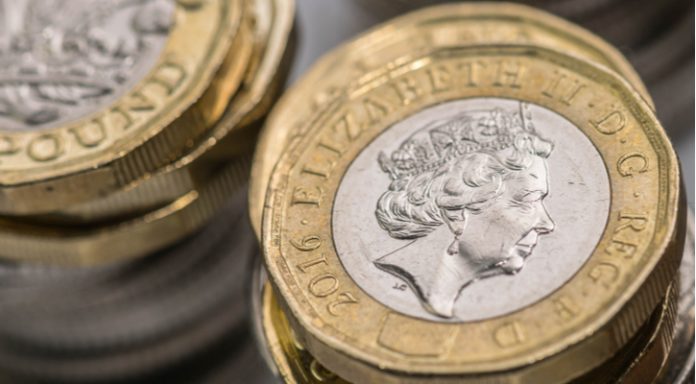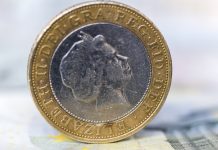The pound’s surge following a jump in consumer inflation was short lived on Wednesday, as Brexit concerns quickly took centre stage. The pound finished the session lower versus the dollar at US$1.3140, despite hitting a peak of $1.3213 earlier in the session.
| What do these figures mean? |
|---|
|
When measuring the value of a pair of currencies, one set equals 1 unit and the other shows the current equivalent. As the market moves, the amount will vary from minute to minute. For example, it could be written: 1 GBP = 1.28934 USD Here, £1 is equivalent to approximately $1.29. This specifically measures the pound’s worth against the dollar. If the US dollar amount increases in this pairing, it’s positive for the pound. Or, if you were looking at it the other way around: 1 USD = 0.77786 GBP In this example, $1 is equivalent to approximately £0.78. This measures the US dollar’s worth versus the British pound. If the sterling number gets larger, it’s good news for the dollar. |
Consumer inflation unexpectedly increasing sent the pound northwards in the previous session. Inflation, as measured by consumer price index, surged 2.7% in August, ahead of July’s 2.5% and significantly above the dip to 2.4% that analysts had been expecting. The increase in prices were mainly due to increases in airfares, computer games and clothes.
Rising prices supported the Bank of England’s decision to raise interest rates last month. The central bank is attempting to cool to slow rising prices which has been on the increase since Brexit devalued the pound. Higher inflation lifted the pound, this is because the central bank is more likely to raise interest rates when inflation is elevated above the target level..
| Why do raised interest rates boost a currency’s value? |
|---|
| Interest rates are key to understanding exchange rate movements. Those who have large sums of money to invest want the highest return on their investments. Higher interest rate environments tend to offer higher yields. So, if the interest rate or at least the interest rate expectation of a country is relatively higher compared to another, then it attracts more foreign capital investment. Large corporations and investors need local currency to invest. More local currency used then boosts the demand of that currency, pushing the value higher. |
It is also worth mentioning that inflation levels can experience volatility from month to month. On the whole, analysts still believe that inflation will resume its downwards path heading towards the BoE’s target of 2%.
The pound’s spike higher following inflation figures was short lived as Brexit fears quickly dominated investor sentiment. Reports circulated that UK Prime Minister Theresa May will reject EU Chief Negotiator Michel Barnier’s improved offer for the Irish border issue. The Irish board is one of the last remaining sticking points to a Brexit deal being achieved and ensuring that the UK avoids a disorderly exit from the EU. Theresa May’s reaction has not lifted optimism that a deal will be done. Fears of a disorderly, hard, no deal Brexit sent the pound lower.
| Why is a “soft” Brexit better for sterling than a “hard” Brexit? |
|---|
| A soft Brexit implies anything less than UK’s complete withdrawal from the EU. For example, it could mean the UK retains some form of membership to the European Union single market in exchange for some free movement of people, i.e. immigration. This is considered more positive than a “hard” Brexit, which is a full severance from the EU. The reason “soft” is considered more pound-friendly is because the economic impact would be lower. If there is less negative impact on the economy, foreign investors will continue to invest in the UK. As investment requires local currency, this increased demand for the pound then boosts its value. |
Dollar Softens As Trade War Fears Ease
The dollar was broadly slightly out of favour versus its peers in the previous session as investors continued to digest trade tension developments. The latest tit for tat measures from China were not as severe as investors had been anticipating, allowing investors to move forward relatively quickly without the need for the dollar’s safe haven. However, the Chinese are unlikely to head to further trade talks under the current climate, which means that the trade tensions could continue into next year.
Dollar investors will switch their attention back to the economic calendar on Thursday, with initial jobless claims and home sales under the spotlight. Better than forecast readings could help lift the dollar.
This publication is provided for general information purposes only and is not intended to cover every aspect of the topics with which it deals. It is not intended to amount to advice on which you should rely. You must obtain professional or specialist advice before taking, or refraining from, any action on the basis of the content in this publication. The information in this publication does not constitute legal, tax or other professional advice from TransferWise Inc., Currency Live or its affiliates. Prior results do not guarantee a similar outcome. We make no representations, warranties or guarantees, whether express or implied, that the content in the publication is accurate, complete or up to date. Consult our risk warning page for more details.
This article was initially published on TransferWise.com from the same author. The content at Currency Live is the sole opinion of the authors and in no way reflects the views of TransferWise Inc.





